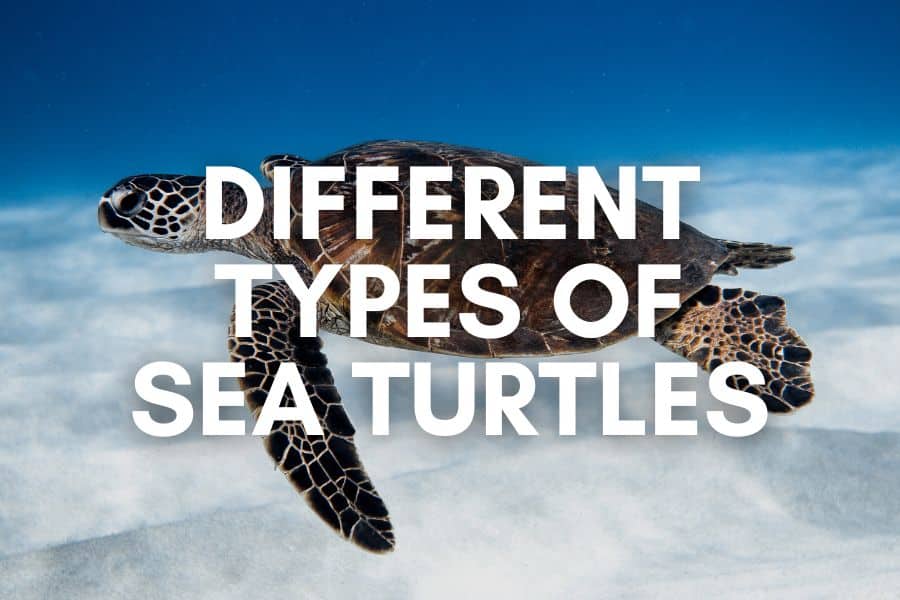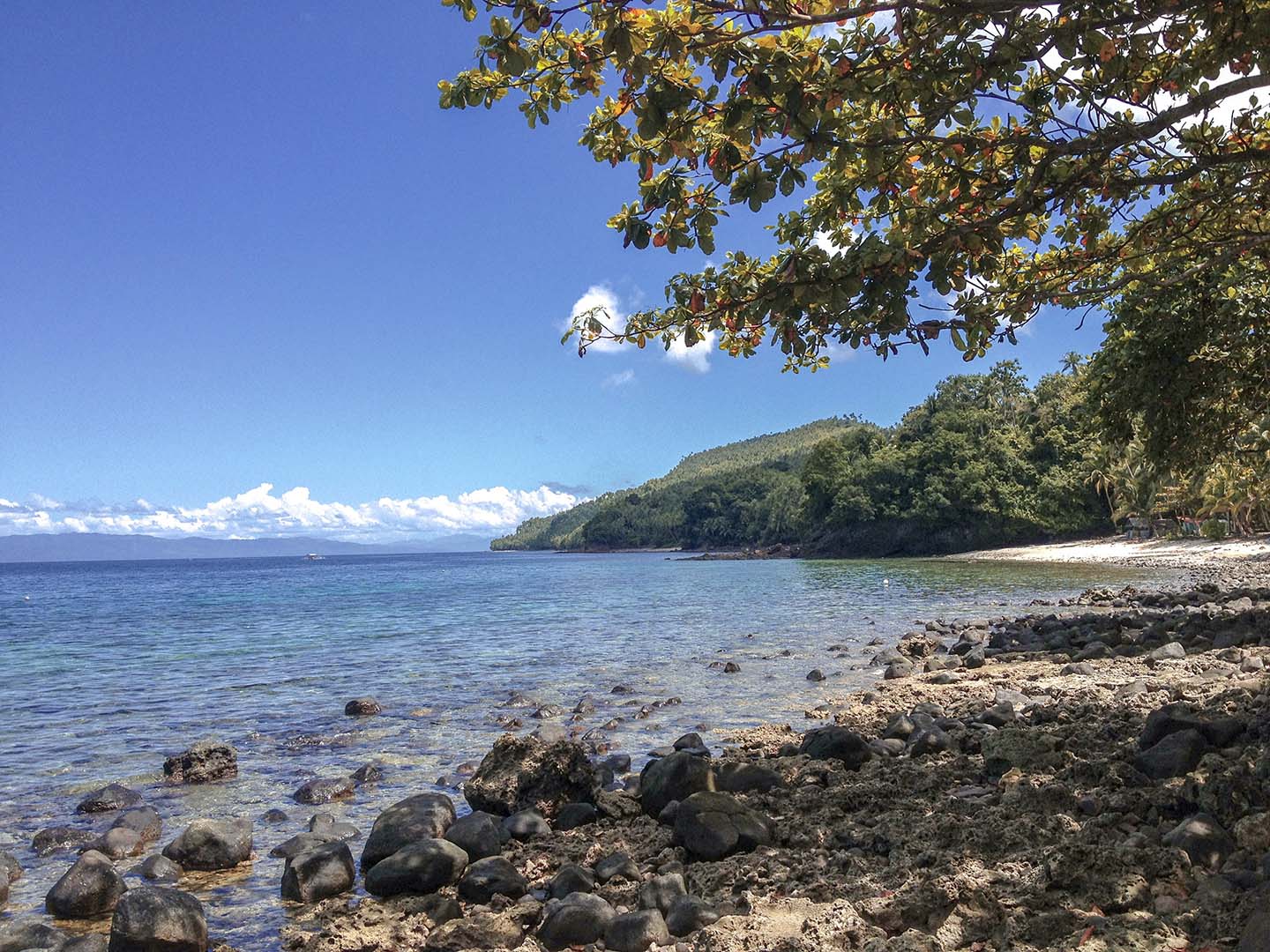Sea turtles are intriguing marine organisms that exist in a wide diversity around the planet. These amazing sea turtle species grab our imagination and inspire wonder.
In this post you’ll learn about the 7 different types of sea turtles in the world. From the majestic Green sea turtle to the endangered Hawksbill, the different sea turtle species exhibit an astounding assortment of physical traits and behaviors.
Continue reading to learn how to tell learn more about the different sea turtles species.
- 1. Green sea turtle (Chelonia mydas)
- 2. Loggerhead sea turtle (Caretta caretta)
- 3. Hawksbill sea turtle (Eretmochelys imbricata)
- 4. Kemp's Ridley sea turtle (Lepidochelys kempii)
- 5. Olive Ridley sea turtle (Lepidochelys olivacea)
- 6. Leatherback sea turtle (Dermochelys coriacea)
- 7. Flatback sea turtle (Natator depressus)
- What threats do the 7 species of sea turtles face?
- What are the practical ways you can do to help protect the 7 kinds of sea turtles?
1. Green sea turtle (Chelonia mydas)
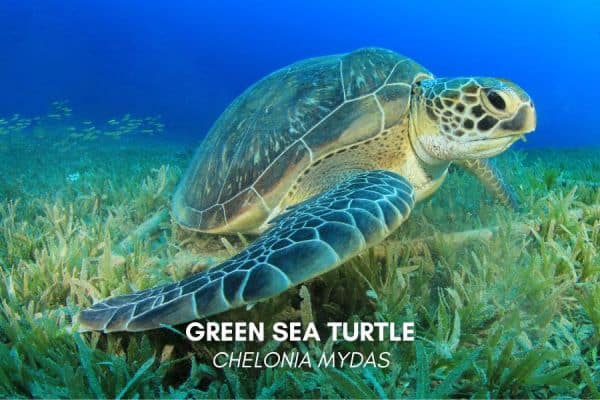
The Green sea turtle, also known as Chelonia mydas, is a fascinating species that is well-known for its distinctive physical characteristics as well as its importance to the environment. They can reach lengths of up to 3-4 feet and weigh up to 300 pounds.
They have a streamlined body and a carapace that is smooth and ranges in color from brown to olive. The fact that they only have one pair of scales in front of their eyes is one of the most distinguishing features that set them apart from other species of sea turtles.
The diet of a green sea turtle consists mainly of seagrass and algae due to its herbivorous nature. Their beak-like jaws and sharp-edged teeth allow them to graze efficiently even when they are swimming. Before making the switch to a herbivorous lifestyle as adults, juveniles had a more omnivorous diet and eating pattern.
These reptiles are found in waters that are either tropical or subtropical all throughout the world, including the oceans of the Atlantic, Pacific, and Indian continents. They do this on beaches all throughout the world, including in the United States (Florida and Hawaii), Mexico, Costa Rica, Australia, and many other nations.
The International Union for the Conservation of Nature (IUCN) has placed the Green sea turtle on its list of Endangered Species.
2. Loggerhead sea turtle (Caretta caretta)
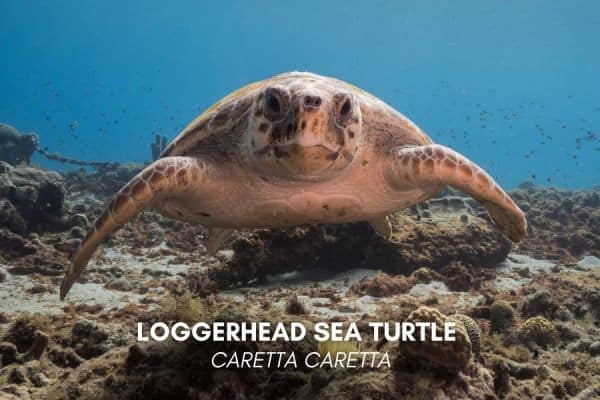
The Loggerhead sea turtle (Caretta caretta) is named for their huge heads and powerful jaws. They have a heart-shaped reddish-brown carapace. Loggerhead sea turtles are distinguished from other species by the presence of five pairs of big scales on their carapace. They are distinguished from Green and Hawksbill sea turtles by their scale patterns.
Loggerhead turtles eat a wide variety of prey, including crustaceans, mollusks, jellyfish, and fish. Their powerful jaws enable them to smash hard-shelled prey.
Loggerhead sea turtles are found all across the world, including the Atlantic, Indian, and Pacific Oceans. They can be found on the shores of the United States, the Mediterranean Sea, Japan, Australia, and Brazil, among other places.
The International Union for Conservation of Nature (IUCN) has classified the Loggerhead sea turtle as Vulnerable.
3. Hawksbill sea turtle (Eretmochelys imbricata)
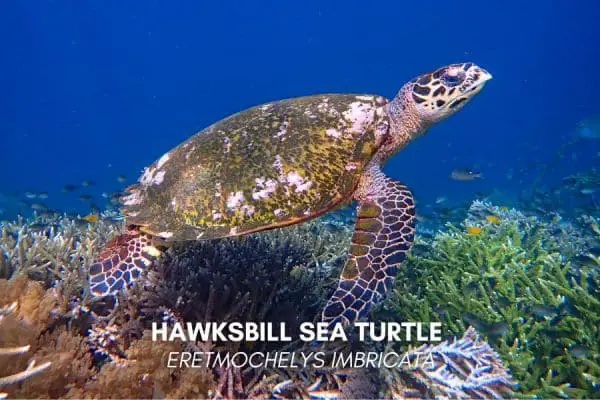
The Hawksbill sea turtle, Eretmochelys imbricata, unlike other sea turtles, are very small at about a couple of feet in length and 100-150 pounds in weight. They have a distinct beak-like mouth, a curving carapace, and strikingly patterned shells.
The carapace of a Hawksbill turtle has an unmistakable “tortoiseshell” appearance due to the overlapping scutes (shell scales) that cover its surface. This sets them apart from other species of sea turtles.
The hawksbill sea turtles are primarily omnivorous, with a diet consisting of sponges, sea anemones, jellyfish, and other invertebrates. Their eating habits contribute to the health of coral reefs by controlling the population of certain organisms.
The Atlantic, Pacific, and Indian Oceans all have a subtropical and tropical zone where hawksbill sea turtles can be found. They can be found in the Caribbean, the Great Barrier Reef, and the Seychelles, among other places with coral reefs and associated habitats.
The International Union for the Conservation of Nature (IUCN) has designated the Hawksbill sea turtle as Critically Endangered.
4. Kemp’s Ridley sea turtle (Lepidochelys kempii)
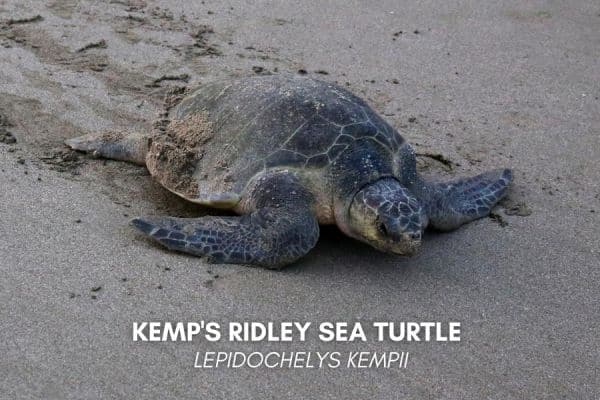
The Kemp’s Ridley sea turtle (Lepidochelys kempii) is the smallest sea turtle species, reaching roughly 2-3 feet in length and weighing 80-100 pounds. These turtles have rounded carapaces that are grayish-green in hue.
Kemp’s Ridley turtles are distinguished by their triangular-shaped head and hooked beak. This distinguishes them from other sea turtle species.
Kemp’s Ridley sea turtles eat mostly crabs and other crustaceans. Their unique jaws allow them to crush their prey’s shells.
Kemp’s Ridley are notable for their synchronized nesting activity known as “arribadas,” in which large groups of females arrive at the same time to nest.
Kemp’s Ridley sea turtles are mostly found in the Gulf of Mexico, specifically along the Mexican and American shores. They travel enormous distances, with some reaching as far as the Atlantic coast of the United States and even Europe.
The International Union for Conservation of Nature (IUCN) lists the Kemp’s Ridley sea turtle as Critically Endangered.
5. Olive Ridley sea turtle (Lepidochelys olivacea)
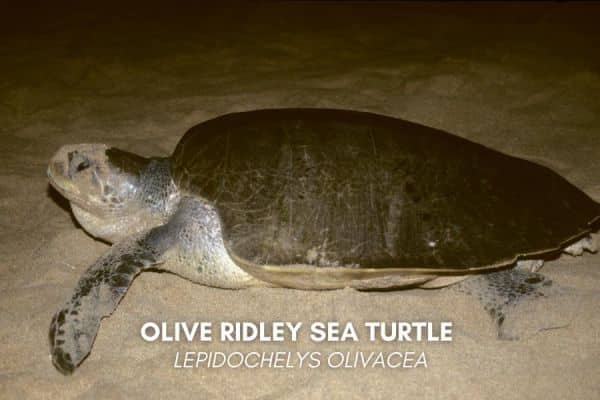
The Olive Ridley sea turtle, Lepidochelys olivacea, is a fascinating creature because of its unusual appearance and nesting habits. Their carapace is small and spherical, and they only reach a length of around 2 to 2.5 feet and a weight of 75 to 100 pounds. The distinctive heart shape of their carapace distinguished from other sea turtles olive ridley turtles.
Olive Ridley are known for their arribadas, mass nesting events where thousands of females come ashore simultaneously to lay their eggs. These nesting gatherings are a remarkable natural spectacle.
Small marine invertebrates like jellyfish, shrimp, crabs, and the like make up the bulk of their food.
Olive Ridley are widespread, inhabiting the warm waters of the Pacific, Indian, and Atlantic oceans. The coastlines of places like Mexico, Costa Rica, India, and Indonesia are common places to find them.
The International Union for the Conservation of Nature (IUCN) has given the Olive Ridley marine turtle a Vulnerable status.
6. Leatherback sea turtle (Dermochelys coriacea)
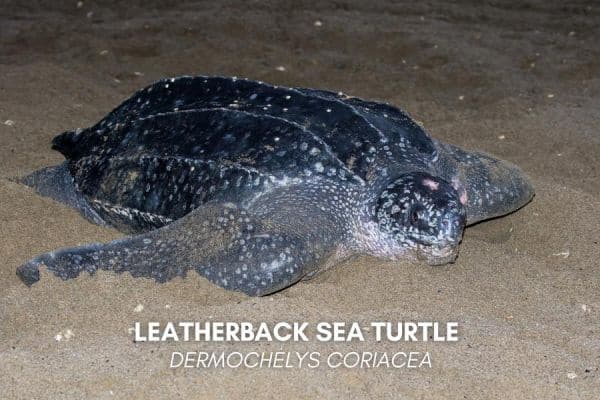
The Leatherback sea turtle, also known as Dermochelys coriacea, is the largest species of sea turtle. The adult individuals reach lengths of 6-7 feet and weigh up to 2,000 pounds, making them the largest reptiles on Earth.
The carapace of a leatherback turtle is unlike the shells of other sea turtles because it is flexible and leathery rather than being made of hard shell-like material. Because of their shell’s flexibility, they can descend to greater depths in search of their primary food source.
Jellyfish make up the bulk of their diet, although they will also ingest other aquatic species with soft bodies. Their jaws are fitted with spines that point in the opposite direction, which allows them to better grab and ingest their slippery prey.
The leatherback sea turtle is found all over the world, including in the warm and cold seas of the Atlantic, Pacific, and Indian Oceans. Its range encompasses the entire planet. They are capable of long-distance migrations, covering thousands of kilometers in order to go from their breeding areas to their feeding grounds.
The International Union for the Conservation of Nature (IUCN) has assigned the endangered status of Vulnerable to the Leatherback sea turtle.
7. Flatback sea turtle (Natator depressus)
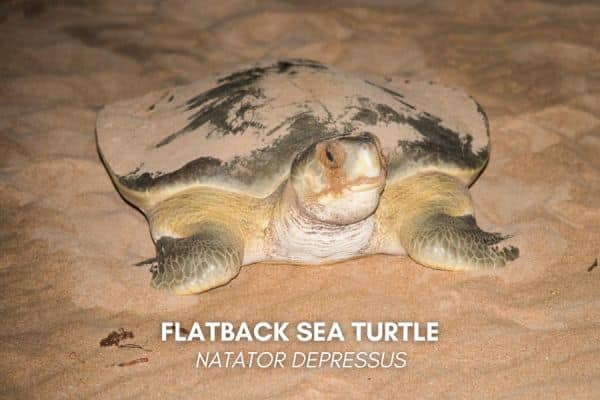
The Flatback sea turtle, or Natator depressus, is a rare and distinctive species of turtle found in the ocean. Their name comes from the fact that their carapace is so small and flat. Flatbacks are normally between 3 and 4 feet in length and 150 to 200 pounds in weight.
These turtles are endemic to the northern oceans of Australia and its adjacent regions and have a very restricted range. They are rarely seen in wide oceans and prefer the shallower waters close to shore.
Invertebrates including soft corals, sea cucumbers, and jellyfish are staples in a Flatback sea turtle’s diet. Their diet is more narrowly tailored than that of other turtles in the sea.
The carapace of a Flatback turtle is smooth, unlike that of most other marine turtles, which typically contain ridges.
The International Union for the Conservation of Nature (IUCN) has designated the Flatback sea turtle as “Data Deficient” at this time.
What threats do the 7 species of sea turtles face?
The seven sea turtle species confront numerous threats that endanger their populations.
As a result of coastal development, beach erosion, and pollution, nesting beaches and feeding sites are deteriorating.
Climate change is a hazard because rising temperatures affect hatchling gender ratios and disrupt crucial oceanic currents.
Entanglement in fishing gear, such as nets and lines, is a severe issue for sea turtles, which can result in damage, drowning, or decreased mobility.
The illegal trade in sea turtle items, particularly their shells and eggs, endangers their survival even further.
Light pollution on nesting beaches causes hatchlings to get disoriented, sending them away from the ocean and towards danger.
Furthermore, marine debris, particularly plastic pollution, offers a serious risk since turtles mistake it for food and absorb it, resulting in damage, disease, and death.
These dangers underline the critical need for conservation efforts and global cooperation to maintain and ensure the long-term survival of these majestic creatures.
What are the practical ways you can do to help protect the 7 kinds of sea turtles?
Individuals and communities can help save the seven sea turtle species in a variety of ways, including:
Donate to recognized sea turtle conservation organizations that work on research, habitat protection, and rescue initiatives. Various sea turtle conservation groups allow you to symbolically adopt them and proceeds go towards the protection of these amazing creatures. These can be unique gifts for sea turtle lovers.
Disseminate information on sea turtle conservation, the value of sea turtles in marine ecosystems, and the risks they face. Collaborate with others to conserve these lovely creatures. You can help raise awareness about sea turtles by supporting Fahlo. When you buy a sea turtle-inspired bracelet, it comes with a real sea turtle to track. You will receive a tracking number so you can monitor online where in the world your sea turtle is. A portion of the proceeds from The Journey Bracelet is donated to Sea Turtle Conservancy. (Use the code: DIVERBLISS20 to get a discount on your sea turtle bracelet.)
Reduce your use of plastic and properly dispose of your waste to keep it from ending up in the ocean, where sea turtles may mistake it for food.
Use turtle-friendly fishing gear and advocate for sustainable fishing techniques that limit bycatch and conserve sea turtle ecosystems.
Join or organize beach clean-up initiatives to eliminate waste and debris that endangers sea turtles and their nesting habitats.
Choose eco-friendly tour operators and places that prioritize sea turtle conservation and encourage sustainable practices to support eco-tourism and responsible travel.
Respect nesting sites. When visiting beaches, follow local guidelines and avoid harming nesting sea turtles or their nests.
By following these simple steps, we can all help to preserve sea turtles and secure a brighter future for these amazing creatures.
